FESTIVALPROGRAMM BLOG
AUSZÜGE IN DEUTSCHSIMPLICITY - the art of complexity - ARS ELECTRONICA 2006 - Festival für Kunst, Technologie und Gesellschaft - Linz, Do 31. August – Di 5. September
26
May
Prix Ars Electronica | posted by MariaHieslmayr | at 14:15:00
Better chances in life through access to communications and information technologies…
is what the initiators of the Cyberela project aim to provide Brazilian women. What the 2006 Prix jury aims to give the initiators in return is an Award of Distinction in the Digital Communities category.
Each woman participating in the project receives a computer equipped with audio processing software and instructions on how to operate the hardware and software. Plus, they’re provided with a broadband Internet connection and technical assistance six months long.
Hooked up to the Net and glued to the speakers!
With this infrastructure—which is also being made available at Telecenters in rural regions—women can actively take advantage of the projects being run by the network. These include participating in local radio programs (which can also be accessed online).
This project benefits women in several ways: it helps them acquire skills involving modern communication technologies and thus enhances women’s qualifications; it fosters networking and information exchange by means of local radio productions; it alerts women to job openings, informs them about political and social issues, and, of course, enables them to contact and network with other women.
In doing so, “Cyberela” provides sustainable developmental aid to human beings who are doubly disadvantaged: victims of gender-specific discrimination, as well as of the so-called Digital Gap whereby access to information technology is distributed very unevenly throughout the world.
For info about Cyberela, log on to >www.cemina.org.br
PROYECTO CYBERELA - RADIO TELECENTROS
Credits: Denis Viola, Thais Corral, Madalena Guilhon, Silvana Lemos (BR)
25
May
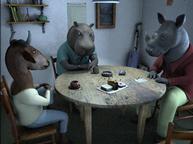 © Daniel Nocke
© Daniel Nocke
Annoyance about dirty dishes, unpunctuality and other people’s eating habits—a perfectly normal situation for a group sharing an apartment somewhere in Germany. But here, the difference is that the four cohabitants are a crocodile, a gnu, a rhinoceros and a hippopotamus. After 10 years, it’s high time for Gerold the crocodile to relocate. Does Ellen, the gnu who recently moved in, have something to do with this decision? And what’s going on between Ellen and her rhinoceros roommate?
In this four-minute-long film Daniel Nocke and his crew have created a work of wit and enigmatic humor. “Simply brilliant! Great depth, very unusual and very good,” is what the Prix Ars Electronica jury had to say. The result: an Award of Distinction in the Computer Animation category.
Making-of info and an excerpt are available online at www.filmbilder.de/de/r/shorts/gerold.htm
For details about the Prix winners, click here
Kein Platz für Gerold
Daniel Nocke / Studio FILM BILDER (DE)
25
May
Prix Ars Electronica | posted by CorneliaSulzbacher | at 11:00:00
A Space Monster Captivates the Jury...
... and captures an Award of Distinction for its creator, Jun Awazu, in the Prix Ars Electronica’s Computer Animation category.
The year is 2025 and the Earth’s population is 10 billion. In order to create new living space, a project is launched to make Mars habitable for human beings. The Izanami, a spaceship named after the Shinto goddess who watches over creation and death, is returning to Earth from a Mars expedition. Just prior to landing, something goes terribly wrong and the shuttle crashes in Tokyo. Negadon, a space monster that the crew had been transporting with them, is awakened to life by the impact. Robotics engineer Ryuichi Narasaki, whose beloved daughter died and thus feels he has nothing left to lose, takes up the fight against Negadon. But does he have a chance to prevail against the space monster?
"Negadon: The Monster from Mars" is an independent film featuring amazing CG special effects. Jun Awazu’s work was inspired by Japanese monster films of the ‘50s and ‘60s like “Godzilla.”
Anyone who’d like to get acquainted with the space monster can check out a trailer at www.negadonattacks.com.
For details about the Prix winners, click here
NEGADON: The Monster from Mars
Jun Awazu (JP)
25
May
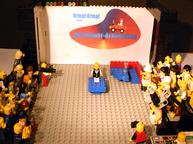 © Hager, Niederklapfer, Wurm
© Hager, Niederklapfer, Wurm
Get up, have breakfast, get dressed and then it’s out the door he goes. Even the inhabitants of LEGO Land have to go to work each day. For the popular TV show “Krmpf, Krmpf,” a camera crew accompanies a LEGO man on his morning commute.
The creators of this reality TV show from the world of LEGO are Alexander Niederklapfer, David and Magdalena Wurm and Ehrentraud Hager. They worked for two years on this 13-minute animated film featuring LEGO building blocks and action figures. Their work displays great love for detail and a truly professional approach. Optical effects like stop action, zoom-ins and zoom-outs, moving reflections in windowpanes and the many different camera angles and settings employed in hundreds of still images made a strong impression on the jury in "u19 – freestyle computing," Austria's largest computer competition for young people, and garnered the four filmmakers a Golden Nica.
www.aarbeitsweg.at.tt
Abenteuer-Arbeitsweg
Ehrentraud Hager, Alexander Niederklapfer, David Wurm, Magdalena Wurm
24
May
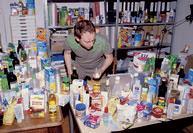 © Codecheck
© Codecheck
What’s in this stuff anyway? The folks at codecheck wanted to find out too, so the digital community developed a site for consumers who were interested in knowing what they were actually eating. What the 2006 Prix Ars Electronica is serving up to them now is an Award of Distinction in the Digital Communities category.
The Codecheck project is an effort to create an informed “community” of consumers who are able to critically assess products when making their purchasing decisions.
The way this works is as simple and clever as can be: by getting a deciphered explanation of the product’s barcode, consumers find out all about the ingredients of the groceries they’re buying.
In concrete terms, it functions as follows: a consumer uses his/her PC to e-mail the product’s numerical code to codecheck.ch; what immediately comes back are comprehensive definitions and information from experts about ingredients like sodium laurent sulfate and E250. The result is the creation of a reference work that is constantly being expanded and updated with contributions from manufacturers, wholesale distributors, specialized labs, consumer organizations and individual consumers. Consumers thus have access to a wide variety of information, opinions and reports, a body of knowledge that constitutes a solid basis on which to form an opinion about a particular product.
Ingredients direct to your cell phone
Plans are currently in the works to enhance this system by building in mobility. For example, in the supermarket you could use your cell phone’s camera to photograph a product’s barcode and then send this image as an MMS to codecheck.ch, and the relevant information would immediately be transmitted back. By linking up diverse technologies (photography, Internet, mobile telecommunications) in this way, Codecheck would constitute a big step in the direction of well-informed consumers.
Codecheck
www.codecheck.ch (CH)
Credits: Roman Bleichenbacher (CH/US)
24
May
Prix Ars Electronica | posted by MariaHieslmayr | at 15:00:00
New technology for displaying information
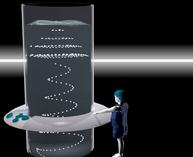 © Himanshu Khatri
© Himanshu Khatri
The jury awarded [the next idea] Art and Technology Grant this year to Himanshu Khatri, a 23-year-old artist from the National Institute of Design in Paldi, Ahmedabad, India. The €7,500 stipend will enable him to realize his “Aquaplay” project.
The jurors explained their choice in these terms: “‘Aquaplay’ is an ambitious application for displays that’s based on air bubbles rising through a special fluid. This technology constitutes a completely novel idea and a dramatic contrast to pixel graphics.”
Air bubbles replace pixels
The project plan calls for a large fluid-filled container with air vents in its base. The user is provided with a touchpad to transmit information to the container’s built-in computer about which forms the user would like to depict. The processor uses this information to generate commands to the vents, which in turn give off precisely controlled groups of air bubbles that form the prescribed patterns or blocks of text in 2D or 3D. Diffused lighting turns Aquaplay into a “magical installation.”
This innovative development can be used for information depiction purposes in displays of all kinds as well as for signage and guidance systems or even as a part of an exquisitely designed interior. During the time leading up to the Ars Electronica Festival, the grant recipient will continue to work on the realization of the project at the Ars Electronica FutureLab.
Aquaplay
Himanshu Khatri (IN) / NID - National Institute of Design - Paldi - Ahmedabad - INDIA
24
May
Prix Ars Electronica | posted by MariaHieslmayr | at 13:15:00
The Golden Nica in the Digital Communities category goes to.... canal*ACCESSIBLE
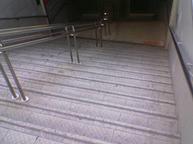 © canal*ACCESSIBLE
© canal*ACCESSIBLE
How can new media be harnessed to improve the world we live in? Since the introduction of the Digital Communities category in 2004, Prix Ars Electronica has been dealing more intensively with the socially relevant implementation of artistic and technological innovations.
For a barrier-free Barcelona!
As its name suggests, canal*ACCESSIBLE confronts the City of Barcelona’s accessibility—or lack thereof—for handicapped men and women.
40 people who are themselves confined to wheelchairs document the hurdles they encounter on their way through the city via photos made with their cell phone cameras and, in some cases, audio recordings. This material is posted online, and the places at which they were created are specified on a city map. These locations can then be viewed using a built-in “find” function.
A map of Barcelona from a very different point of view
The result is a very special map of Barcelona: namely, a cartographic representation of the parts of town in which barrier-free design is sorely lacking and which are therefore off-limits to people confined to wheelchairs.
3,336 architectural impediments have been documented in this way on canal*ACCESSIBLE since December 2005—thus, empowerment of disadvantaged segments of the population as something other than empty phrases for once.
Whoever’s interested in seeing for themselves the hurdles that the handicapped face in Barcelona can do so online at www.zexe.net/barcelona .
http://www.zexe.net/barcelona (ES)
canal*ACCESSIBLE
Credits: Konzept und Projektleitung: Antoni Abad / Programmierung: Eugenio Tisselli / Organisation: Mery Cuesta / Organisationsassistenz: Pilar Cruz
24
May
Prix Ars Electronica | posted by MariaHieslmayr | at 10:00:00
What do road movies and origami have in common?
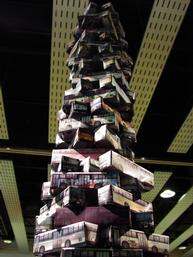 © exonemo
© exonemo
Not a thing, unless you’re talking about the “MobLab” project in which young Japanese and German artists undertook joint adventures in art and communication during a bus trip through Japan. Then, the answer is: quite a bit!
During their journey, this group of artists created a mobile installation entitled “The Road Movie.”
While the passengers were cruising through a wide variety of landscapes, the webcam mounted on the bus produced five images of the surroundings every five minutes. The image files were uploaded to the Internet in the form of a piece of origami art.
If you can’t make the trip to Japan...
Anyone who wants to can print out this origami and create his own road movie with folded busses. Far-off locations are suddenly to be found right in your own living room. Just click onwww.exonemo.com/RM and you’re on your way!
This blend of traditional origami and the road movie film genre within the framework of a very unique Web project won over the jury and was awarded the Golden Nica in the Net Vision category.
The Road Movie
exonemo (JP)
Blog Autoren:
Maria Hieslmayr Cornelia Sulzbacher Wolfgang Bednarzek Gerda Hinterreiter Didi Offenhuber Beta Lounge Artists Sonja Meller StWSt denCity.net
Suche:
Kategorien:
Conferences Animation Festival Events, Concerts & Performances Campus Exhibitions e-lobby Prix Ars Electronica
Recent Posts:
Photographs of the 2006 Festival Media lab thanks! Ars Electronica Center FM4 Live from Ars Electronica in Linz
Archiv:
Posts 60 - 40 Posts 40 - 20 Posts 20 - 0


